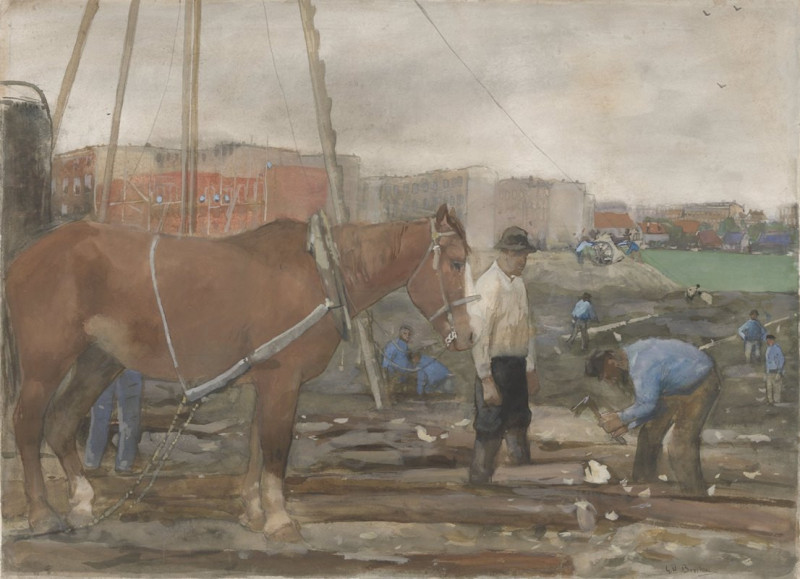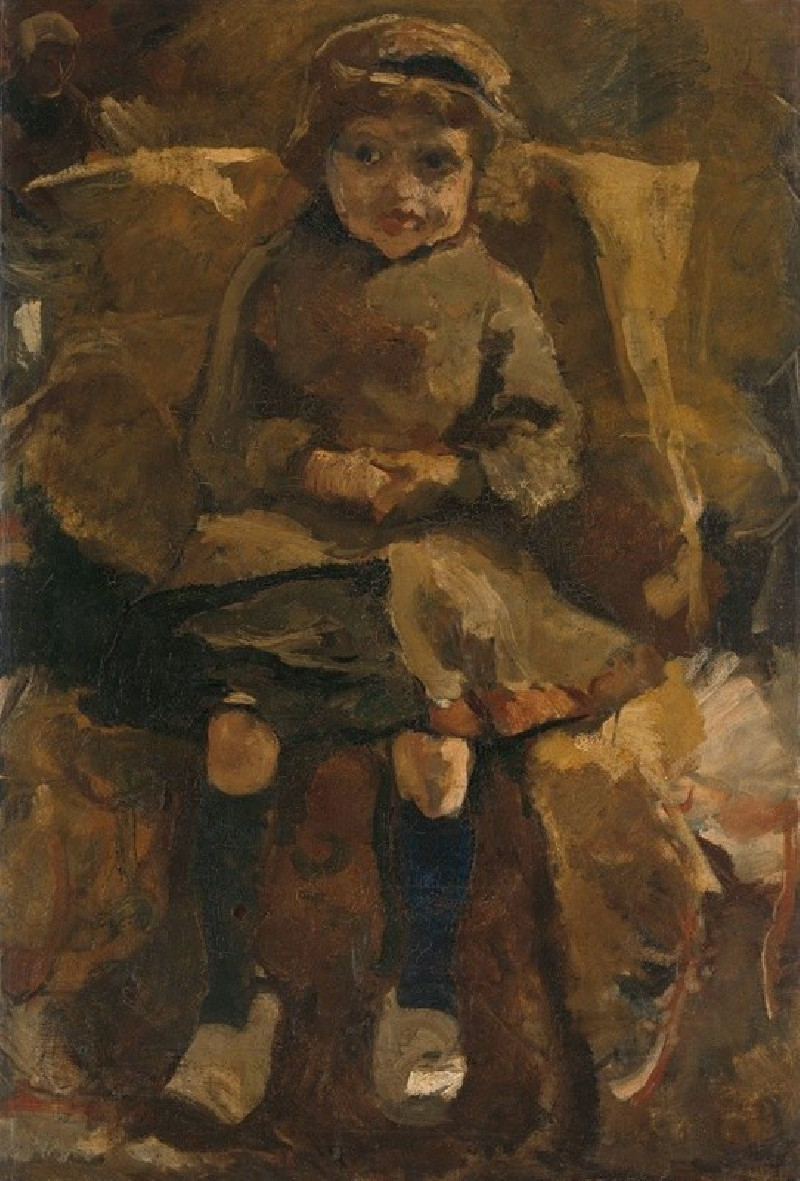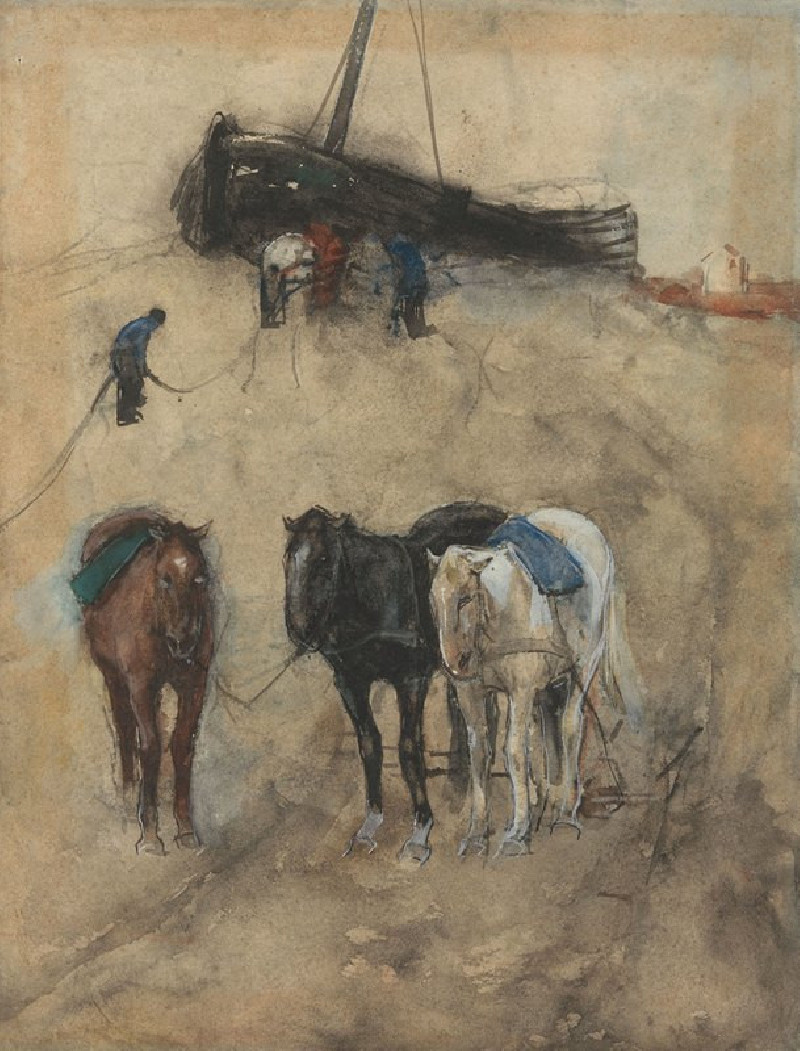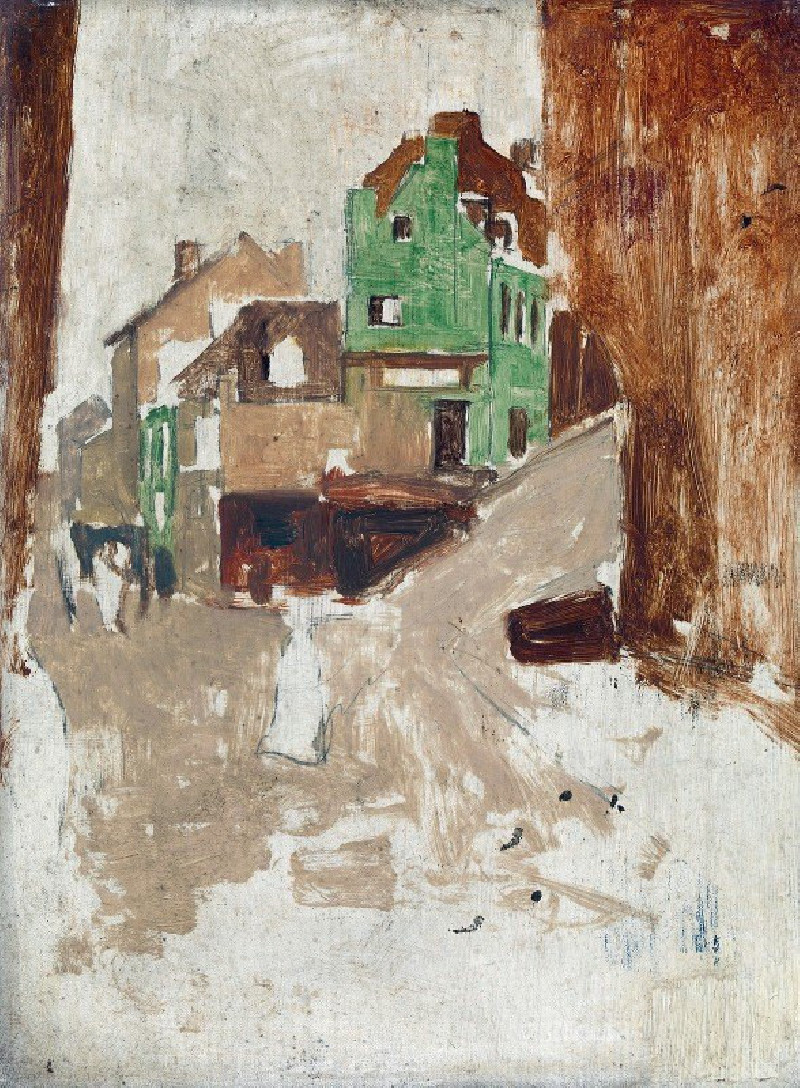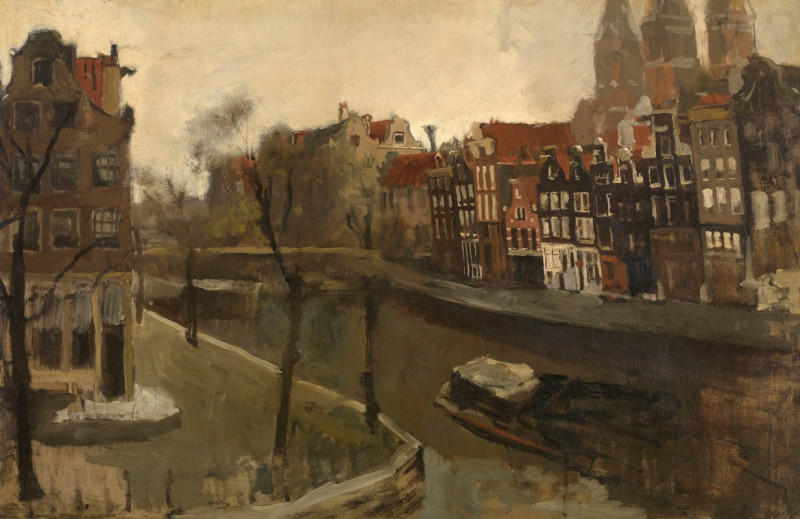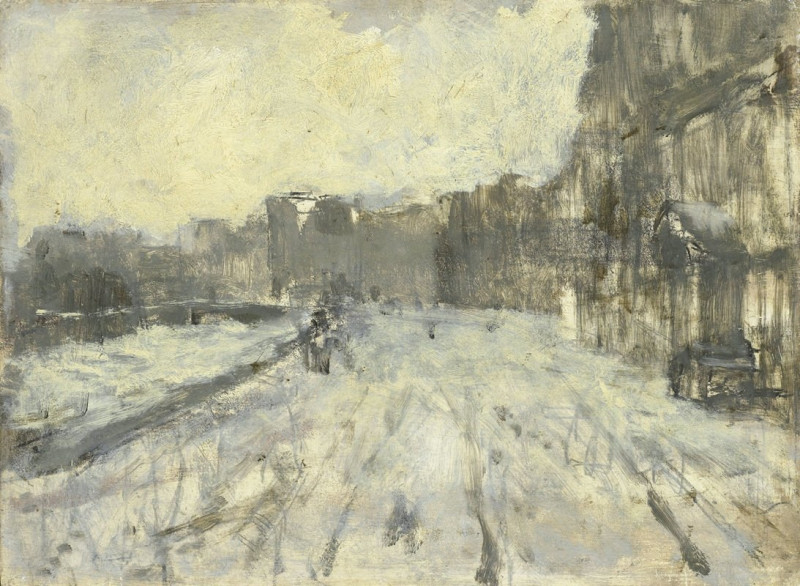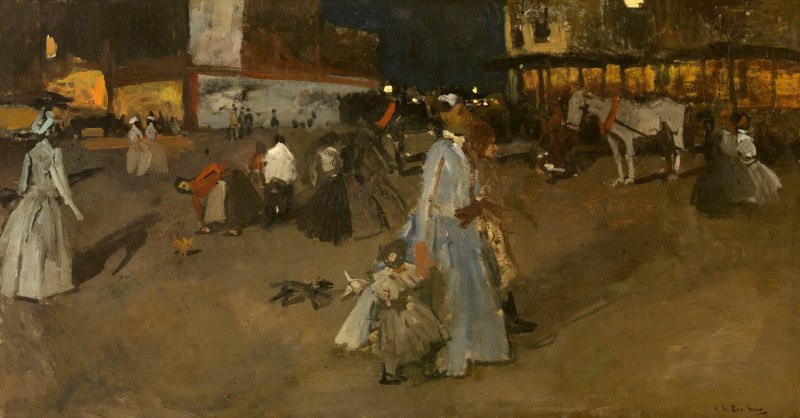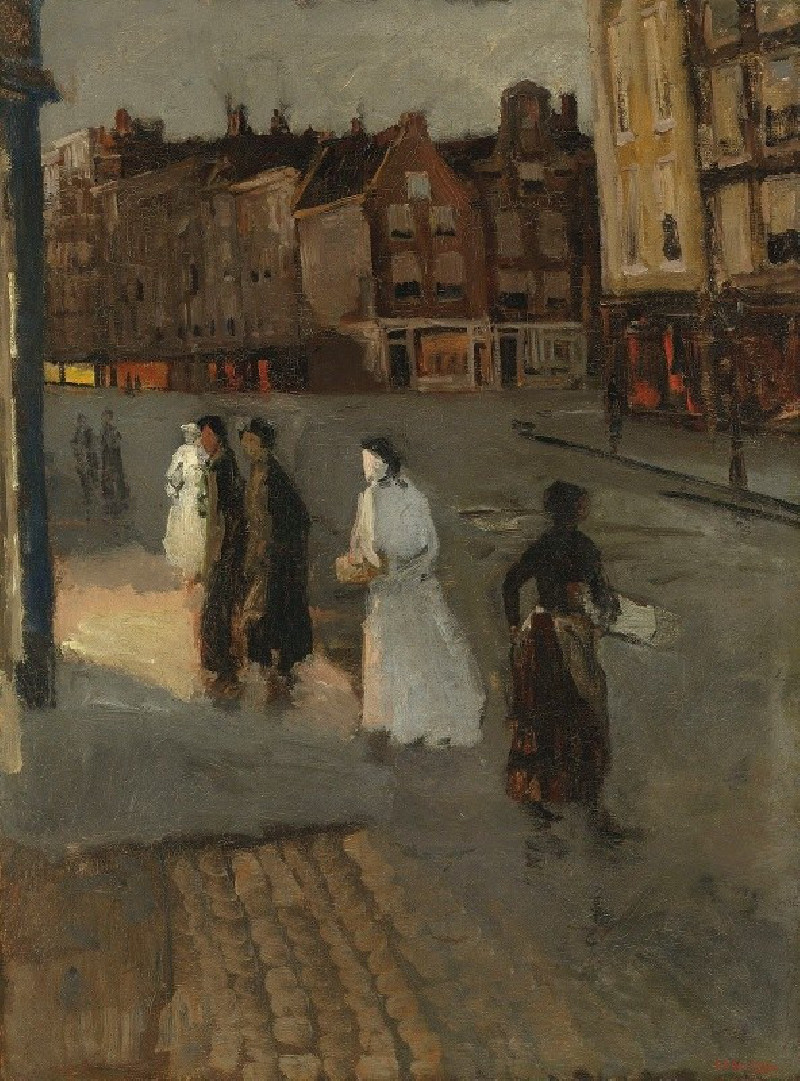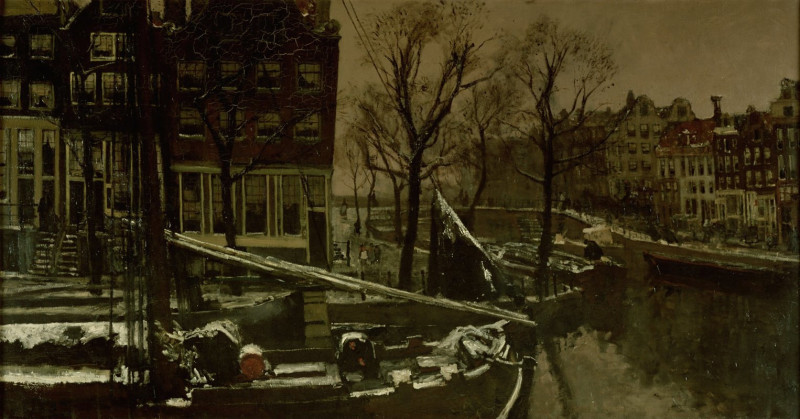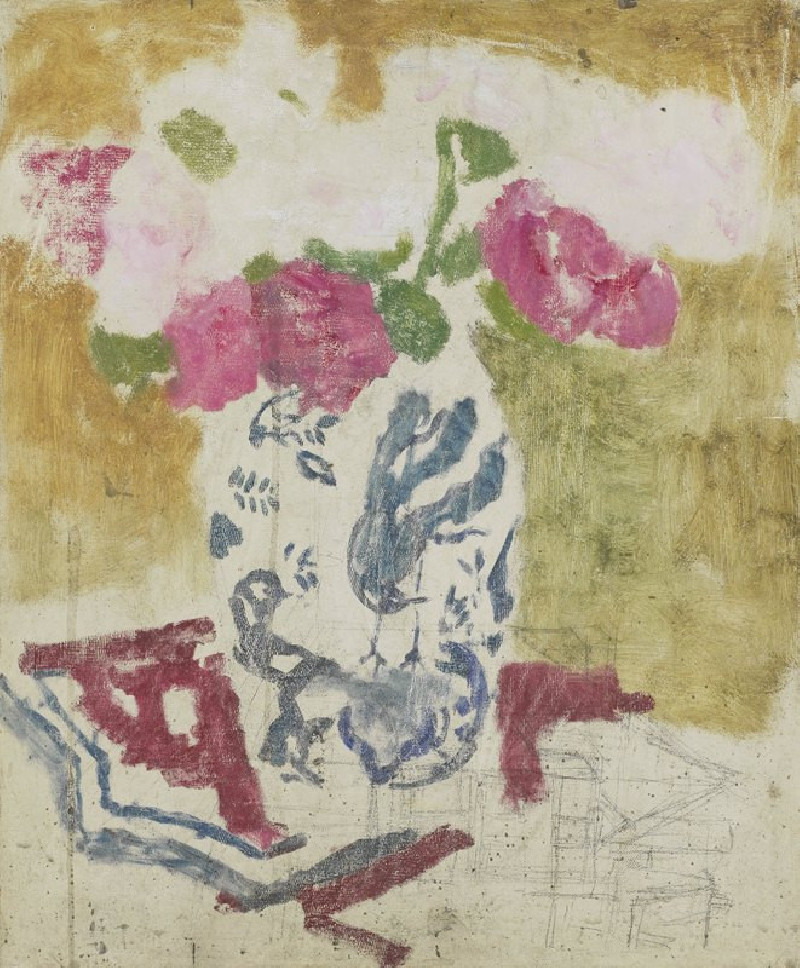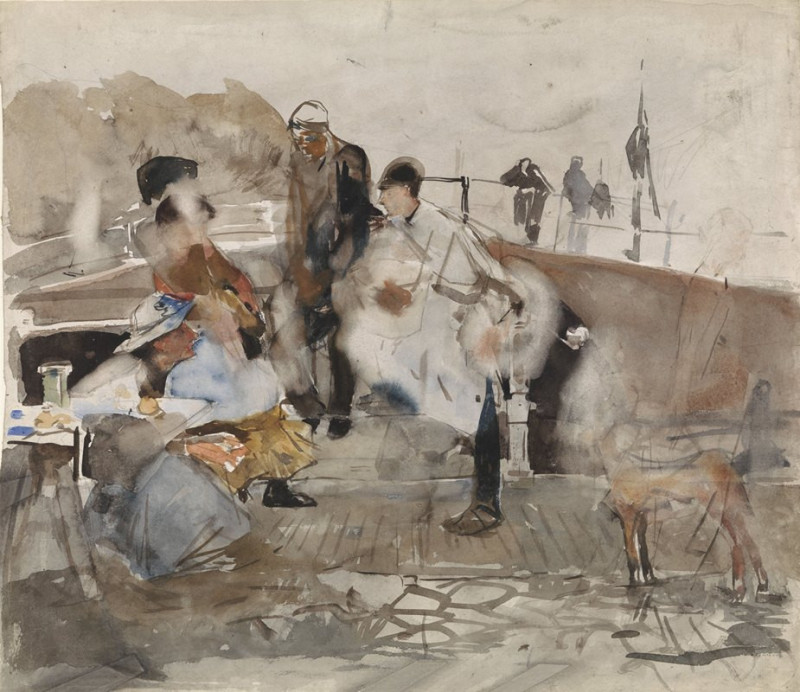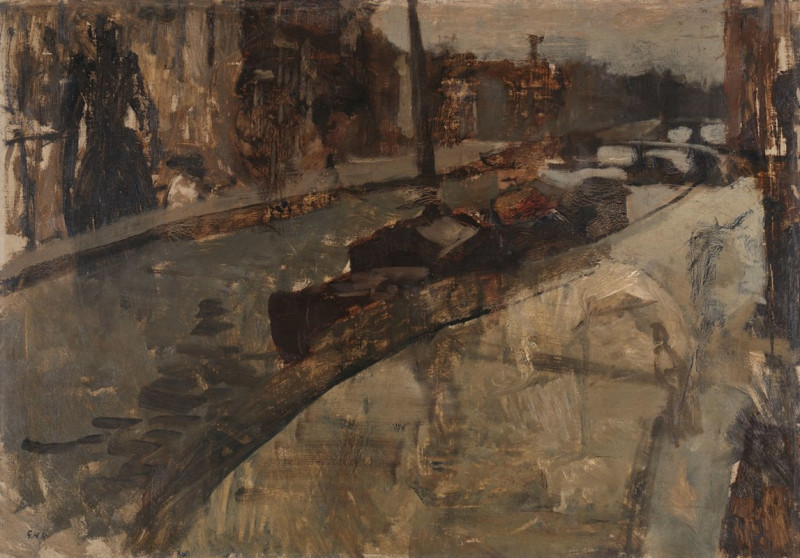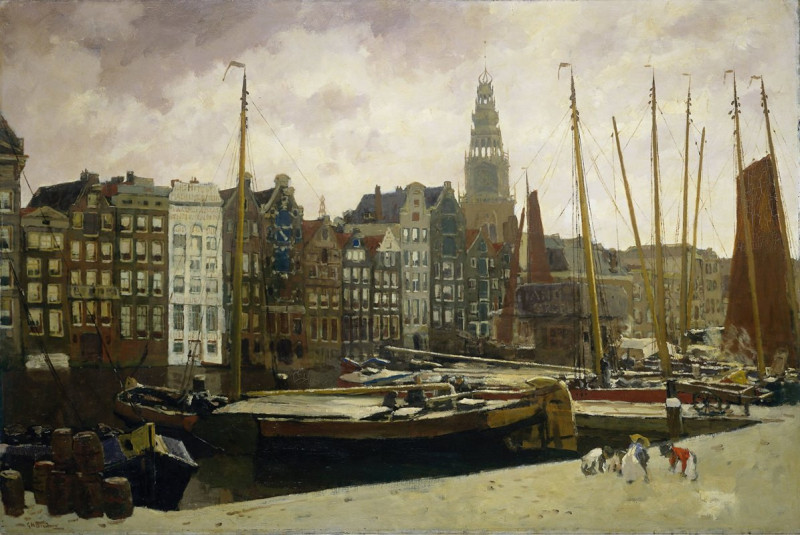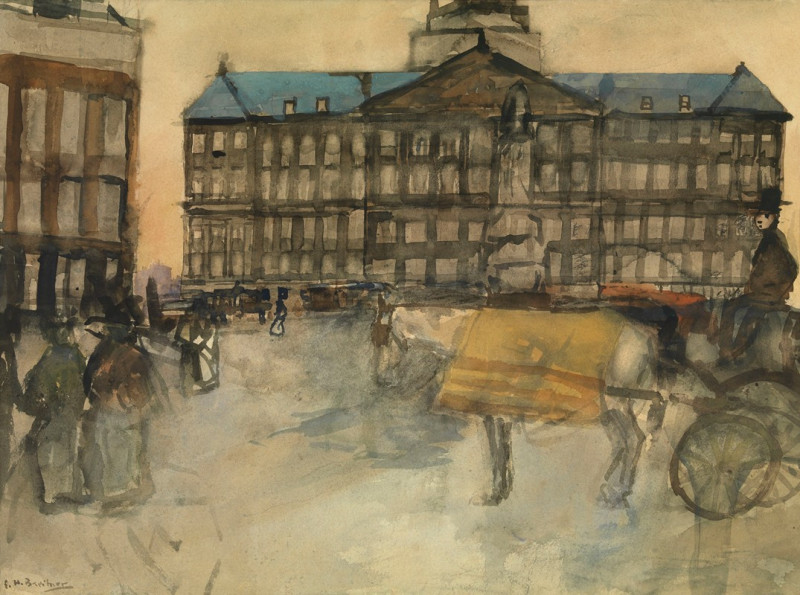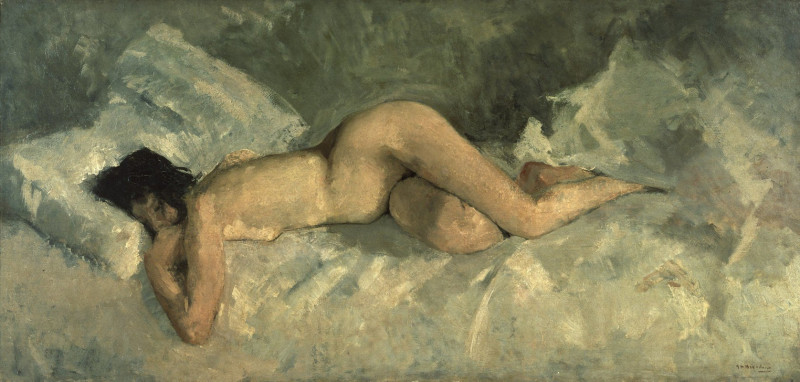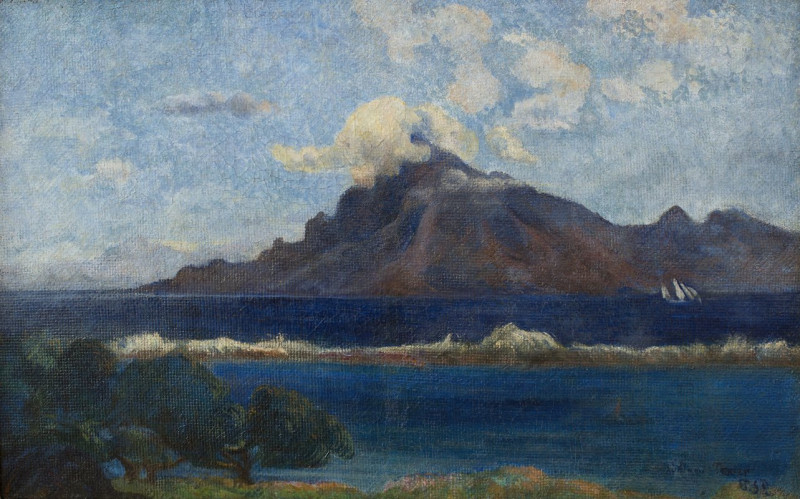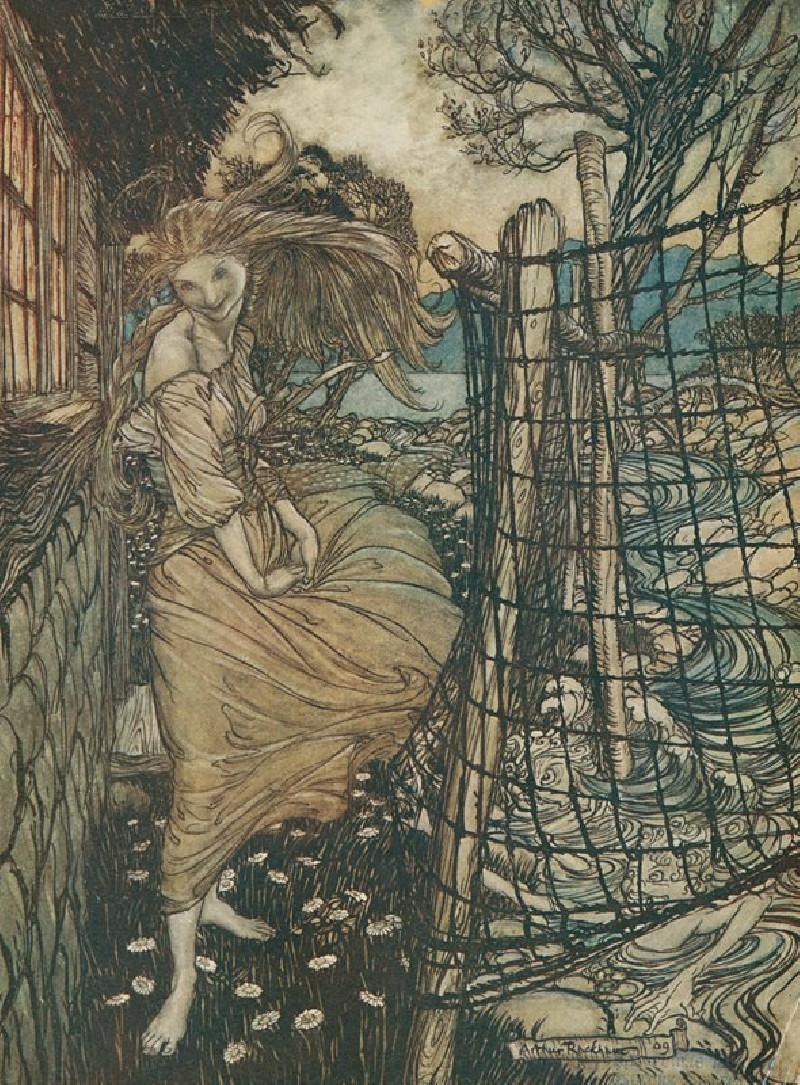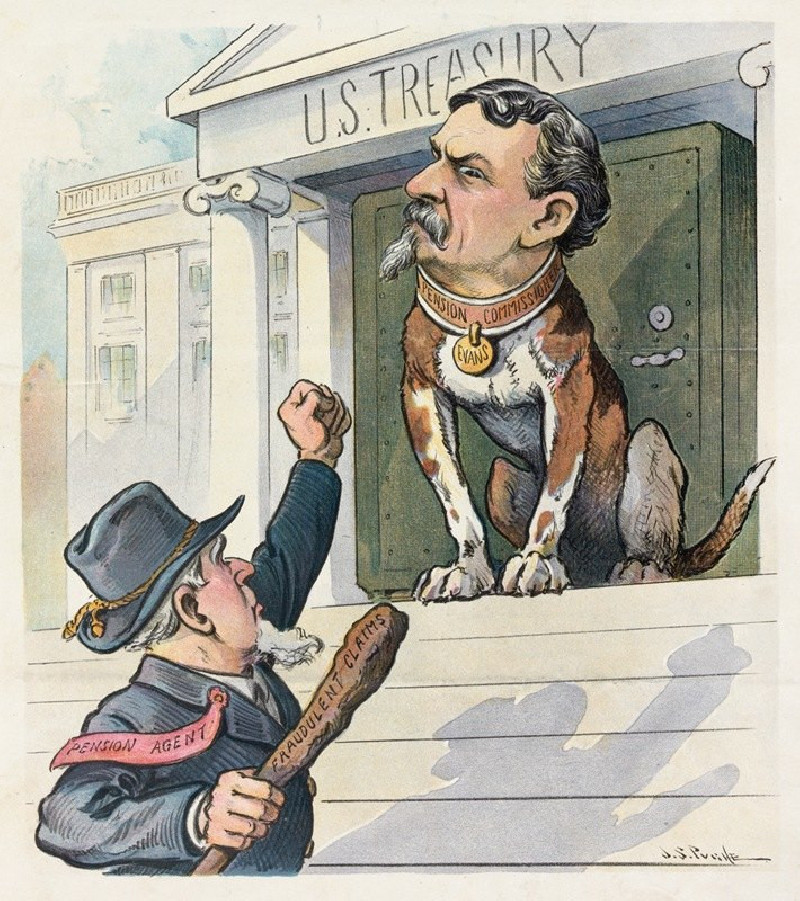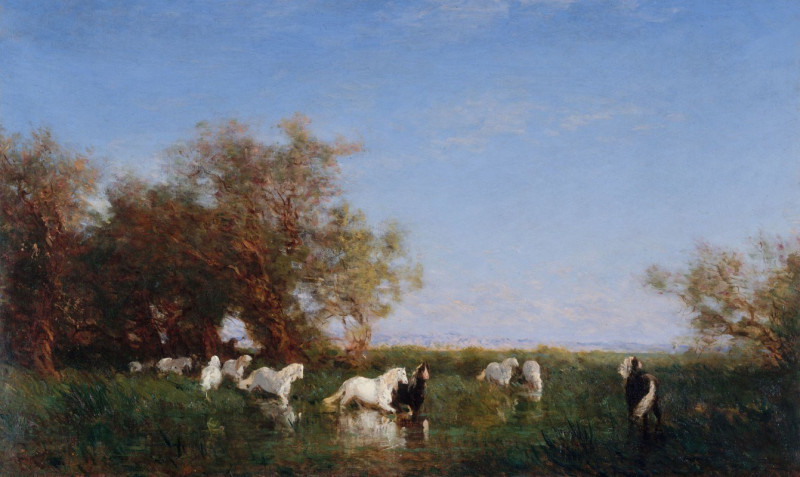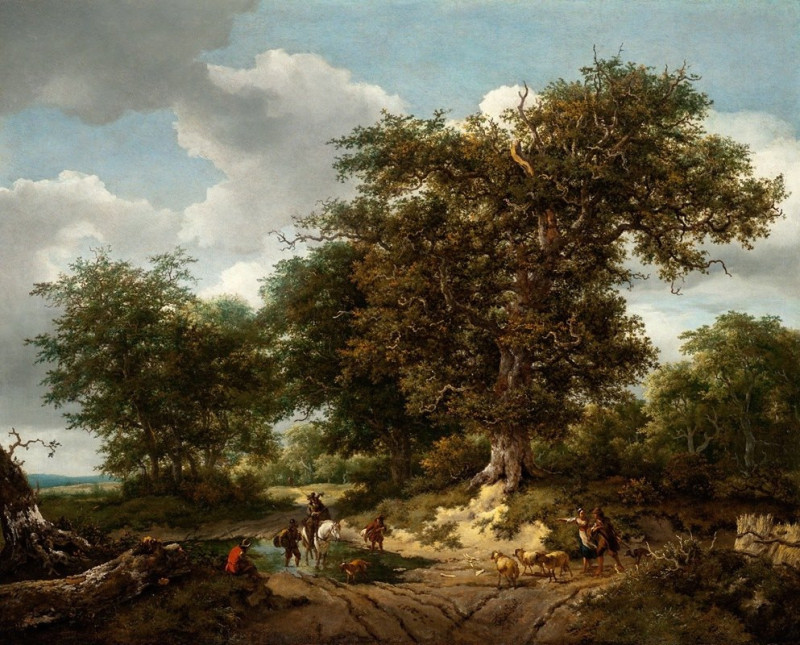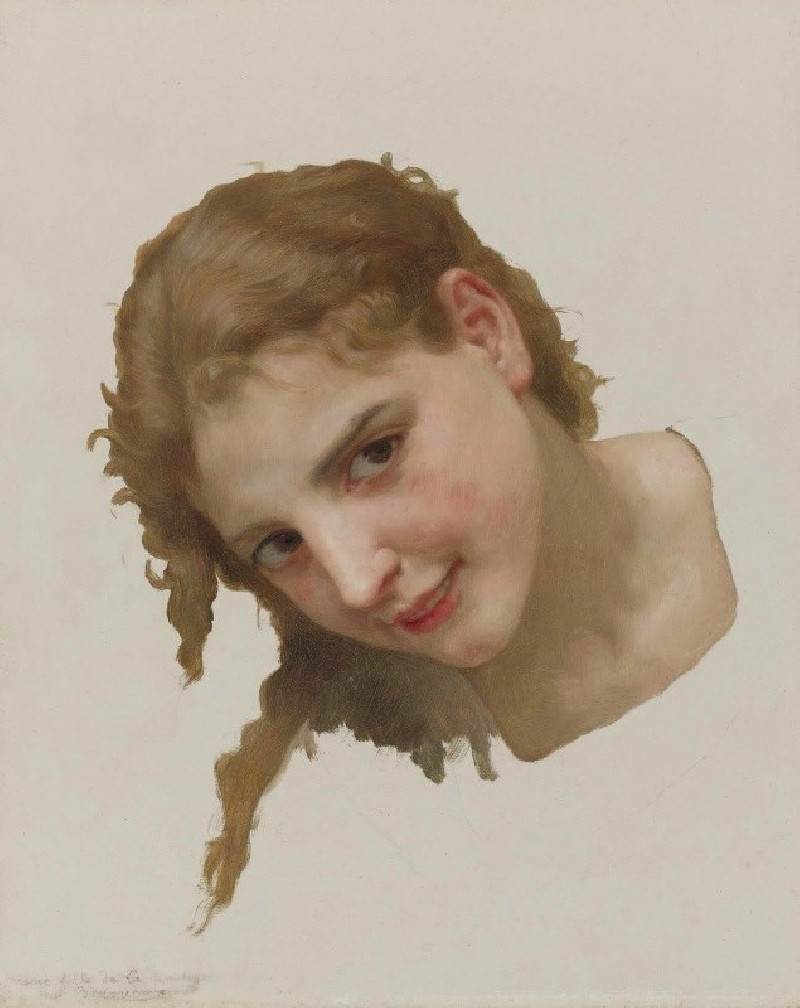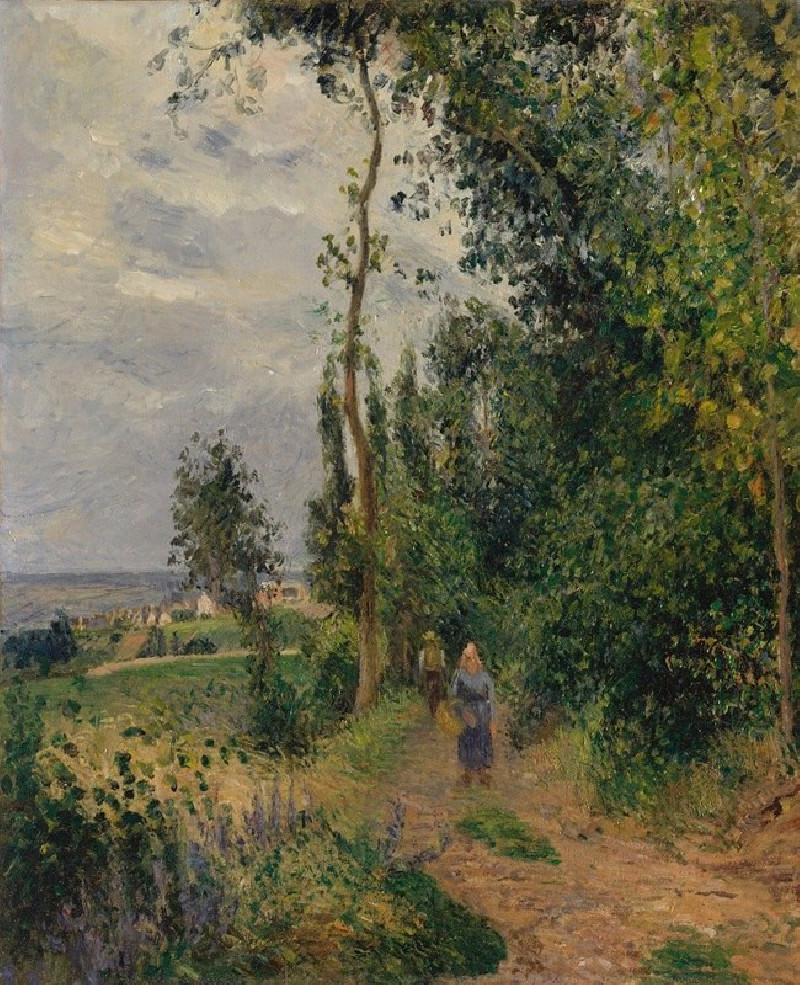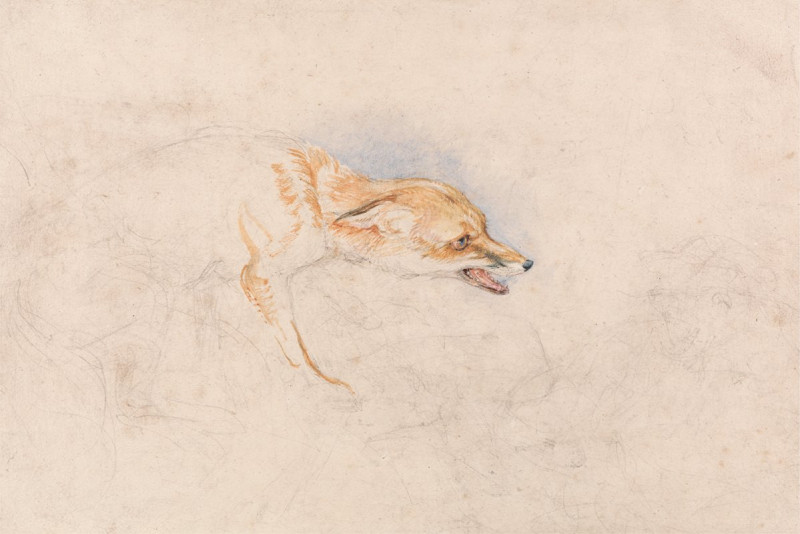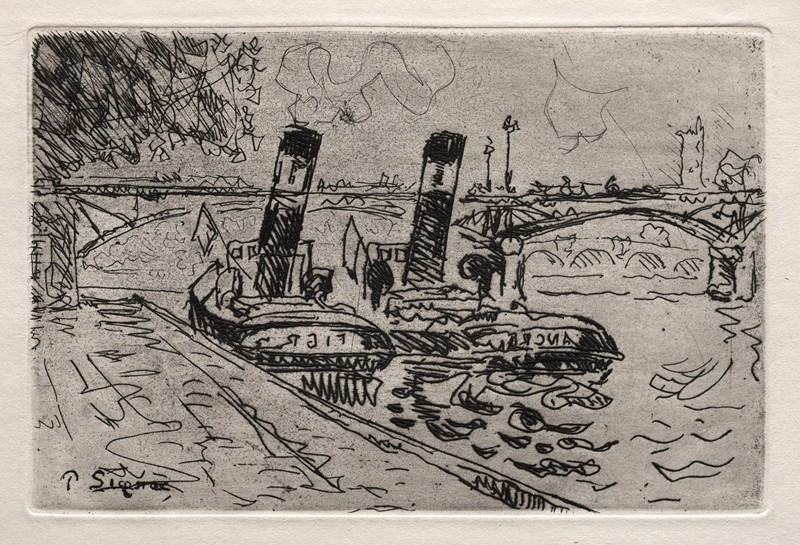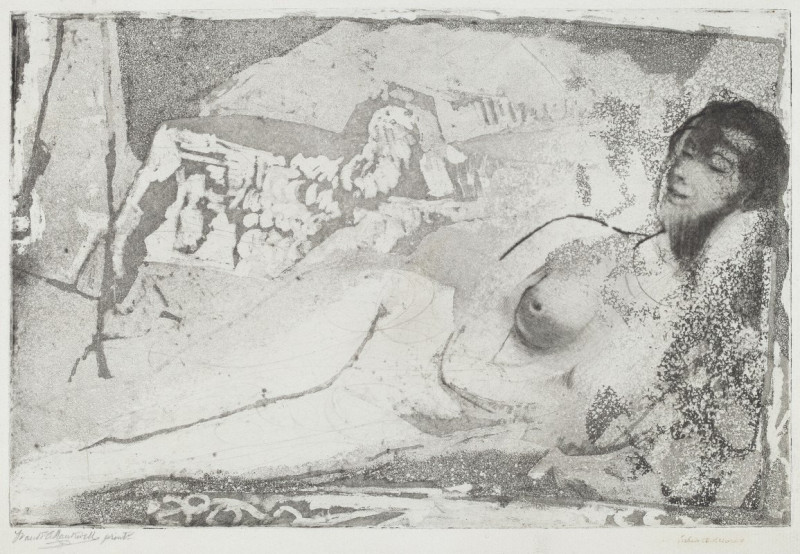Bouwterrein Oud-West te Amsterdam (1900)
Technique: Giclée quality print
Recommended by our customers
More about this artwork
George Hendrik Breitner’s painting titled "Bouwterrein Oud-West te Amsterdam" portrays a bustling construction site during the early 1900s in Amsterdam. The scene is a vivid depiction of daily life and labor, highlighting Breitner's interest in the realism and dynamism of urban modernization. The painting is washed with a palette of muted earthy tones, reflecting the gritty reality of the construction environment.In the foreground, a large, muscular horse dominates the view, hitched to unseen equipment, symbolic of the manual labor and horsepower relied upon before the advent of modern machinery. A man stands next to the horse, holding its bridle, his face and stance exuding a quiet strength and patience. His interaction with the animal adds a personal, humane element to the scene of industrial progress.Around these central figures, workers are scattered across the construction site. Some are actively engaged in their tasks, handling tools and materials, while others take a moment to rest, sitting amidst the chaos. The background features incomplete buildings and stacks of materials, giving a sense of the ongoing development and the vast scale of urban expansion.Breitner's use of watercolor in this piece allows for fluidity and a sense of impermanence, which matches the ever-changing landscape of the city. The composition captures a moment frozen in time yet filled with motion—the essence of a city transforming itself.This painting not only provides a historical glimpse into Amsterdam's urban development but also serves as a testament to the working class individuals who physically shaped the city's landscape.
Delivery
Returns
George Hendrik Breitner (12 September 1857 – 5 June 1923) was a Dutch painter and photographer. An important figure in Amsterdam Impressionism, he is noted especially for his paintings of street scenes and harbours in a realistic style. He painted en plein air, and became interested in photography as a means of documenting street life and atmospheric effects – rainy weather in particular – as reference materials for his paintings.

